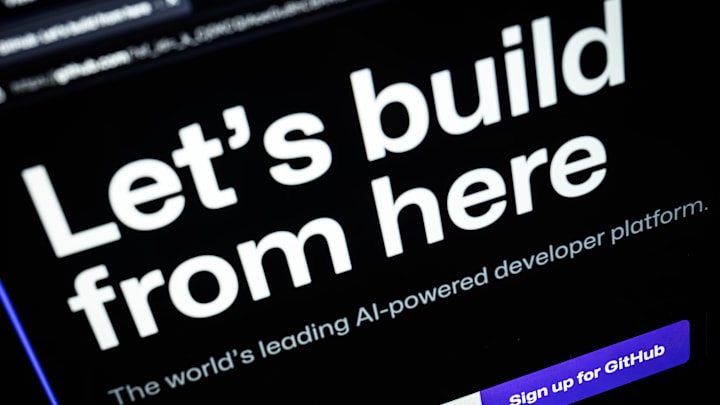In recent years, programming has been evolving to be more scalable, easier to read, and faster as developers strive to build more efficient apps that are easy to maintain. While legacy languages like Java and C++ still hold strong, a new generation of languages is rising, promising even greater efficiency and versatility.
Understanding the unique features of these languages is essential for today’s developers, whether they’re building complex machine learning models, web applications, or mobile apps. Let’s take a look at some of the languages that are shaping the future of programming.
Defining modern programming languages
Modern programming languages are defined not just by their age but by their features and approach to problem-solving. These languages often emphasize ease of use, high readability, and strong community support, making them accessible to beginners and appealing to seasoned developers alike. Many of them come with features tailored to address concurrency, memory safety, and support for large-scale applications, distinguishing them from older, traditional languages.
These languages are also often open-source, allowing developers worldwide to contribute to their improvement. They frequently have a large set of libraries, frameworks, and tools that simplify complex tasks and reduce development time.
Top modern programming languages and their primary uses
Some languages stand out for their widespread use and versatility. Python, JavaScript, Swift, Kotlin, and Rust are at the forefront, each serving unique purposes across various industries. Python, a favorite here at GeekSided, is celebrated for its simplicity and power in data science and AI. JavaScript, coupled with TypeScript, remains the dominant language for web development, while Swift and Kotlin lead in mobile development for iOS and Android, respectively.
Rust and Go are also starting to get more popular due to their focus on safety and concurrency. Each of these languages provides specialized tools and features that help developers achieve more while writing less code. Knowing the purpose and strength of each language can help you decide which language is best for your needs and preferences.
A closer look at each of the top languages
Python
Python has established itself as one of the most versatile and accessible programming languages available today. It’s easy to read and simple to learn. T’s the go-to language for data science, artificial intelligence, and web development, all of which are very big right now. Its extensive libraries make it a top choice for tackling data-heavy applications and cutting-edge projects.
Essential Python Projects and Scripts: Your Ultimate GeekSided Resource
JavaScript and TypeScript
JavaScript is the backbone of web development, powering interactive and dynamic websites worldwide. With the introduction of frameworks like React, Vue, and Angular, JavaScript has expanded from a simple scripting language to a powerful tool for creating full-featured web applications. It’s not just for the front end; Node.js allows developers to use JavaScript for backend services, enabling full-stack development in a single language.
TypeScript builds upon JavaScript, adding static typing that makes code more predictable and less prone to errors, especially in large-scale applications. TypeScript’s compatibility with JavaScript allows developers to gradually introduce it into their projects, making it easier to adopt and implement. Together, JavaScript and TypeScript form a powerful duo for anyone looking to build interactive, scalable, and high-performance web applications.
Swift and Kotlin
Swift is an easy-to-learn language for iOS development. With its speed and safety features, Swift enables developers to write apps that are not only faster but also less prone to errors.
Kotlin is the top language used in Android development. Developers celebrate it for its conciseness, null safety, and compatibility with Java, which allows users to make use of Java’s large number of existing libraries to speed up development time.
Rust and Go
Rust is a language known for its memory safety and the fact that it does not require a garbage collector. This makes it ideal for systems programming and applications where performance is critical, like game engines, operating systems, and embedded systems.
Go, also known as Golang is a Google programming language. Go’s concurrency model, which includes goroutines, allows developers to manage multiple processes efficiently, making it perfect for building scalable cloud services. It’s fast and easy to learn, making it a good choice for developers looking to develop efficient backend services that can handle high traffic.
Specialized languages on the rise
As software development diversifies, so does the need for specialized programming languages like Julia, R, and Dart. Julia is quickly gaining popularity in scientific computing due to its speed and efficiency in handling complex mathematical computations, making it ideal for research and high-performance applications.
R, a language designed specifically for statistical analysis, remains a favorite among data analysts and statisticians for tasks like data visualization and predictive modeling. Dart, another language developed by Google, powers the Flutter framework, enabling developers to create cross-platform mobile applications with a single codebase.
Still a need for traditional languages
While learning cutting-edge languages has many advantages, there is still plenty of demand for traditional programming languages like C and C++. These languages are in widespread use and are extremely powerful. They also have vast libraries and lots of community support.
Follow GeekSided to stay up to date with all of the latest news
